 Dentin sialophosphoprotein (DSPP) is highly expressed in odontoblasts responsible for dentin formation. Traditionally, DSPP is considered an extracellular matrix protein that regulates the formation and mineralization of dentin matrix. In Dspp knockout mice, in addition to defects in dentin formation, researchers observed a phenotype of reduced angiogenesis in certain regions of the femur. However, the role of DSPP in the process of angiogenesis remains unclear. Recently, Professor Guohua Yuan and his research team from the School of Stomatology at Wuhan University published research articles in the Journal of Biological Chemistry in the form of “companion papers” titled Dentin sialoprotein acts as an angiogenic factor through association with the membrane receptor endoglin and Dentin sialoprotein promotes endothelial differentiation of dental pulp stem cells through DSPaa34-50-endoglin-AKT1 axis.The findings of these two articles indicate that DSP (dentin sialoprotein), the N-terminal cleavage product of DSPP, can act as a signaling molecule that binds to the membrane receptor ENG on the surface of dental pulp stem cells, activating the downstream AKT1 signaling pathway, thereby promoting the differentiation of dental pulp stem cells into endothelial cells.
Dentin sialophosphoprotein (DSPP) is highly expressed in odontoblasts responsible for dentin formation. Traditionally, DSPP is considered an extracellular matrix protein that regulates the formation and mineralization of dentin matrix. In Dspp knockout mice, in addition to defects in dentin formation, researchers observed a phenotype of reduced angiogenesis in certain regions of the femur. However, the role of DSPP in the process of angiogenesis remains unclear. Recently, Professor Guohua Yuan and his research team from the School of Stomatology at Wuhan University published research articles in the Journal of Biological Chemistry in the form of “companion papers” titled Dentin sialoprotein acts as an angiogenic factor through association with the membrane receptor endoglin and Dentin sialoprotein promotes endothelial differentiation of dental pulp stem cells through DSPaa34-50-endoglin-AKT1 axis.The findings of these two articles indicate that DSP (dentin sialoprotein), the N-terminal cleavage product of DSPP, can act as a signaling molecule that binds to the membrane receptor ENG on the surface of dental pulp stem cells, activating the downstream AKT1 signaling pathway, thereby promoting the differentiation of dental pulp stem cells into endothelial cells.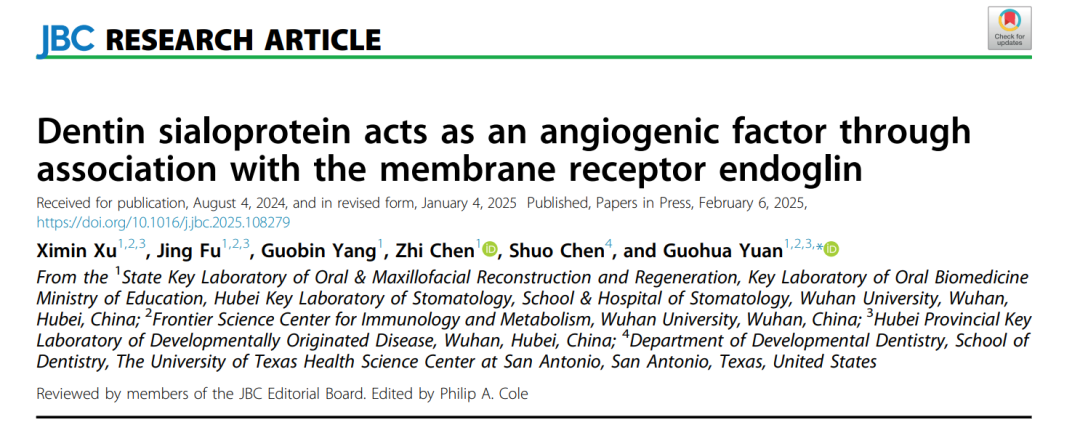
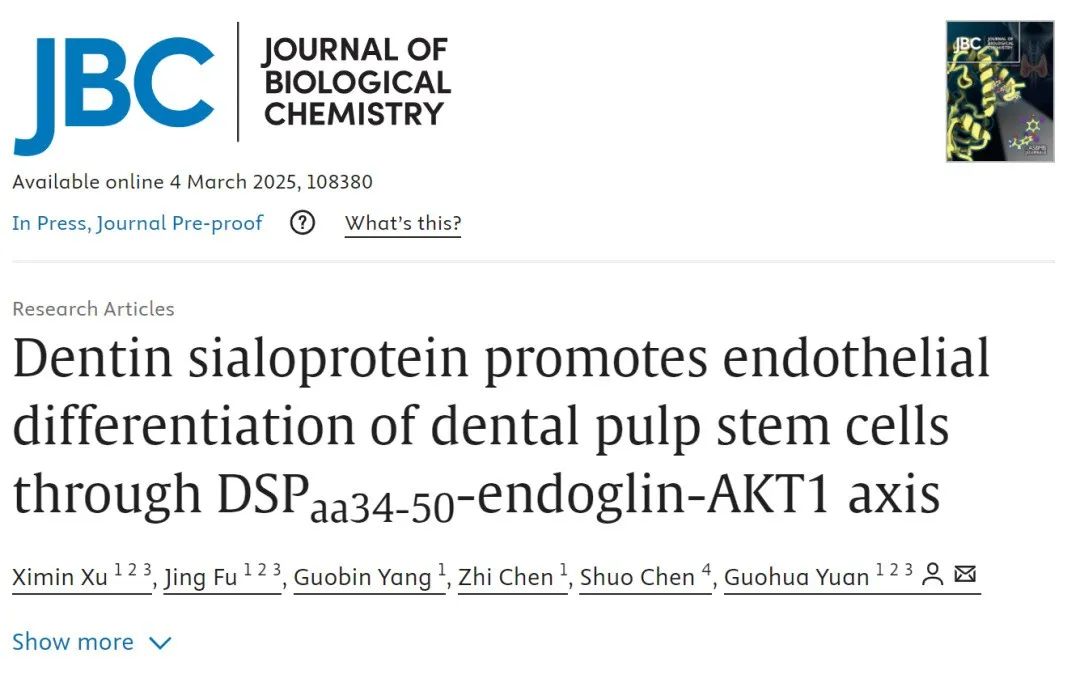 During dentin formation, a large number of blood vessels enter the dental mesenchyme. The research team first collected conditioned media from undifferentiated dental papilla cells and odontoblasts to stimulate human umbilical vein endothelial cells (HUVECs), finding that conditioned media from odontoblasts could promote tube formation in HUVECs, while the use of anti-DSP antibodies could inhibit this tube formation function. In vitro experiments demonstrated that recombinant DSP protein could promote HUVEC migration and tube formation, and also promote the migration and endothelial differentiation of dental pulp stem cells (DPSCs). Combining previous research from the team, the authors used a series of molecular biology experiments including immunoprecipitation, flow cytometry, immunofluorescence staining, and in situ proximity ligation assays to demonstrate that DSP can bind to the membrane receptor ENG related to angiogenesis, and further confirmed that DSP promotes the migration and endothelial differentiation of DPSCs through ENG. Through phenotypic analysis of angiogenesis in the dental developmental mesenchyme of Dspp knockout mice, the authors found that knocking out Dspp leads to defects in angiogenesis in the teeth of mice, suggesting at an in vivo level that DSP is involved in regulating angiogenesis. Subsequently, the authors identified the amino acid fragment 34-50 of DSP that specifically binds to ENG through immunoprecipitation and demonstrated that this fragment protein also has similar functions to the full-length protein. RNA sequencing analysis and subsequent biological experiments further confirmed that after DSP binds to ENG, it activates the AKT1 signaling pathway, promoting the migration of dental pulp stem cells and their differentiation into endothelial cells.
During dentin formation, a large number of blood vessels enter the dental mesenchyme. The research team first collected conditioned media from undifferentiated dental papilla cells and odontoblasts to stimulate human umbilical vein endothelial cells (HUVECs), finding that conditioned media from odontoblasts could promote tube formation in HUVECs, while the use of anti-DSP antibodies could inhibit this tube formation function. In vitro experiments demonstrated that recombinant DSP protein could promote HUVEC migration and tube formation, and also promote the migration and endothelial differentiation of dental pulp stem cells (DPSCs). Combining previous research from the team, the authors used a series of molecular biology experiments including immunoprecipitation, flow cytometry, immunofluorescence staining, and in situ proximity ligation assays to demonstrate that DSP can bind to the membrane receptor ENG related to angiogenesis, and further confirmed that DSP promotes the migration and endothelial differentiation of DPSCs through ENG. Through phenotypic analysis of angiogenesis in the dental developmental mesenchyme of Dspp knockout mice, the authors found that knocking out Dspp leads to defects in angiogenesis in the teeth of mice, suggesting at an in vivo level that DSP is involved in regulating angiogenesis. Subsequently, the authors identified the amino acid fragment 34-50 of DSP that specifically binds to ENG through immunoprecipitation and demonstrated that this fragment protein also has similar functions to the full-length protein. RNA sequencing analysis and subsequent biological experiments further confirmed that after DSP binds to ENG, it activates the AKT1 signaling pathway, promoting the migration of dental pulp stem cells and their differentiation into endothelial cells.
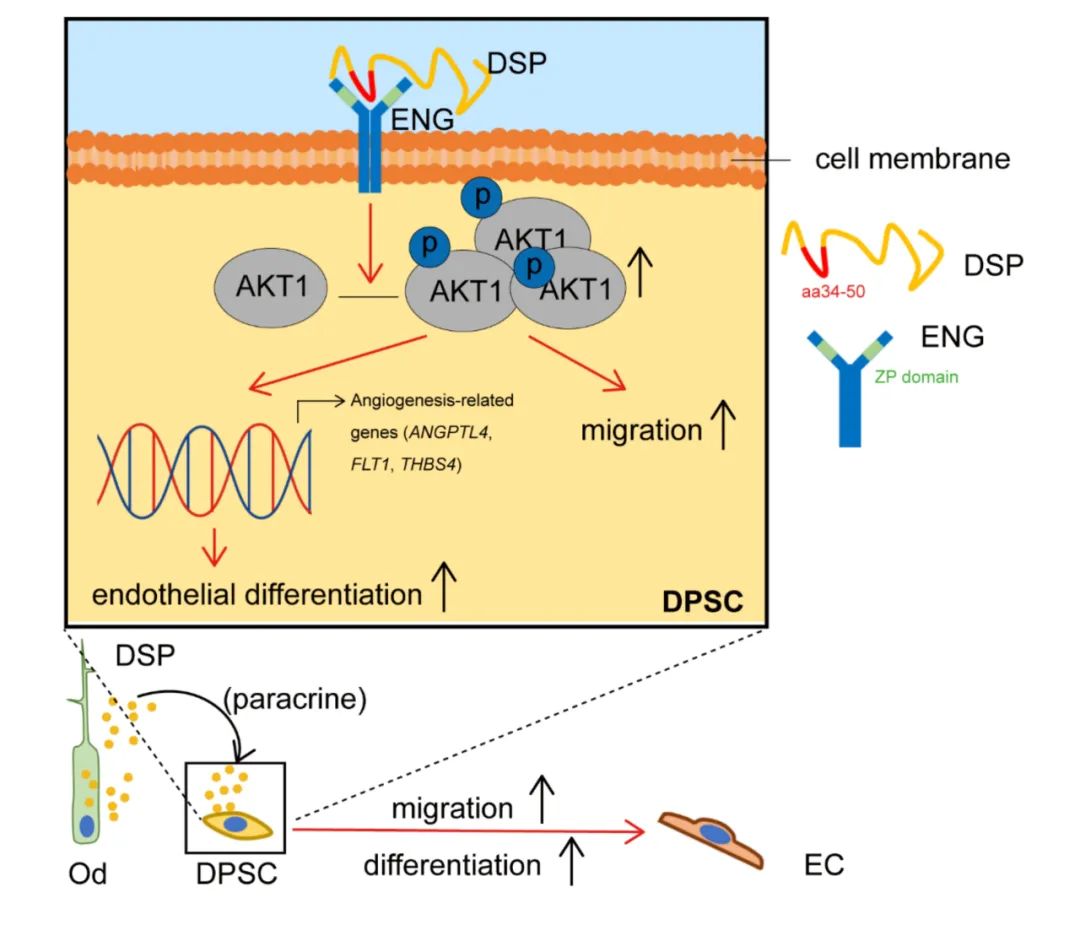
This study demonstrates that the DSPaa34-50-ENG-AKT1 signaling axis is involved in regulating the migration and endothelial differentiation of dental pulp stem cells, revealing a new function of DSP protein in angiogenesis and suggesting its potential application in the treatment of ischemic diseases.
Original links:
https://doi.org/10.1016/j.jbc.2025.108279
https://doi.org/10.1016/j.jbc.2025.108380
Editor: Eleven
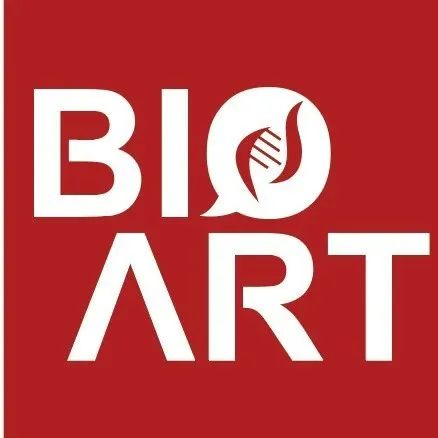
BioArt
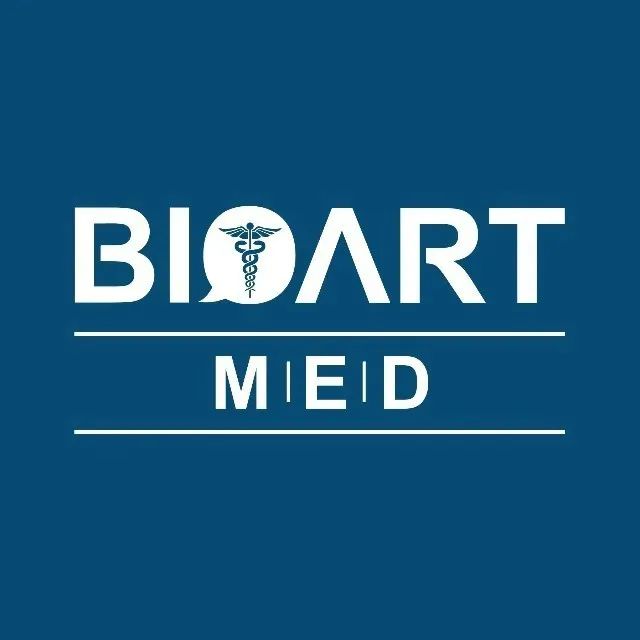
Med
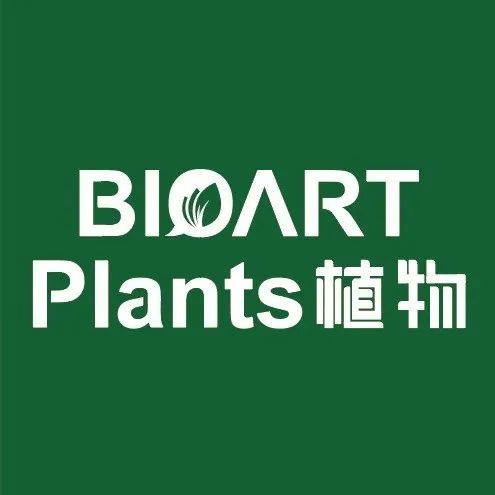
Plants

Talent Recruitment
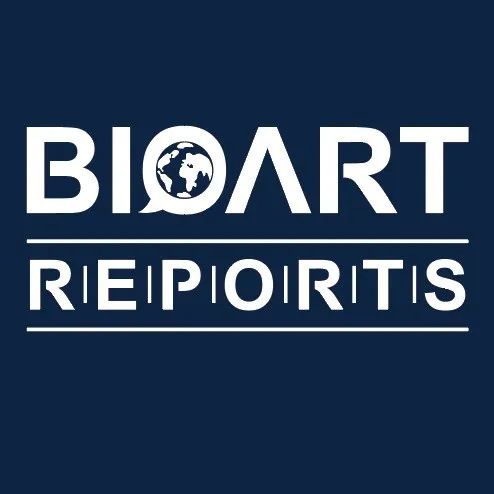
Conference Information
Academic Cooperation Organization
(*Ranking is not in order)
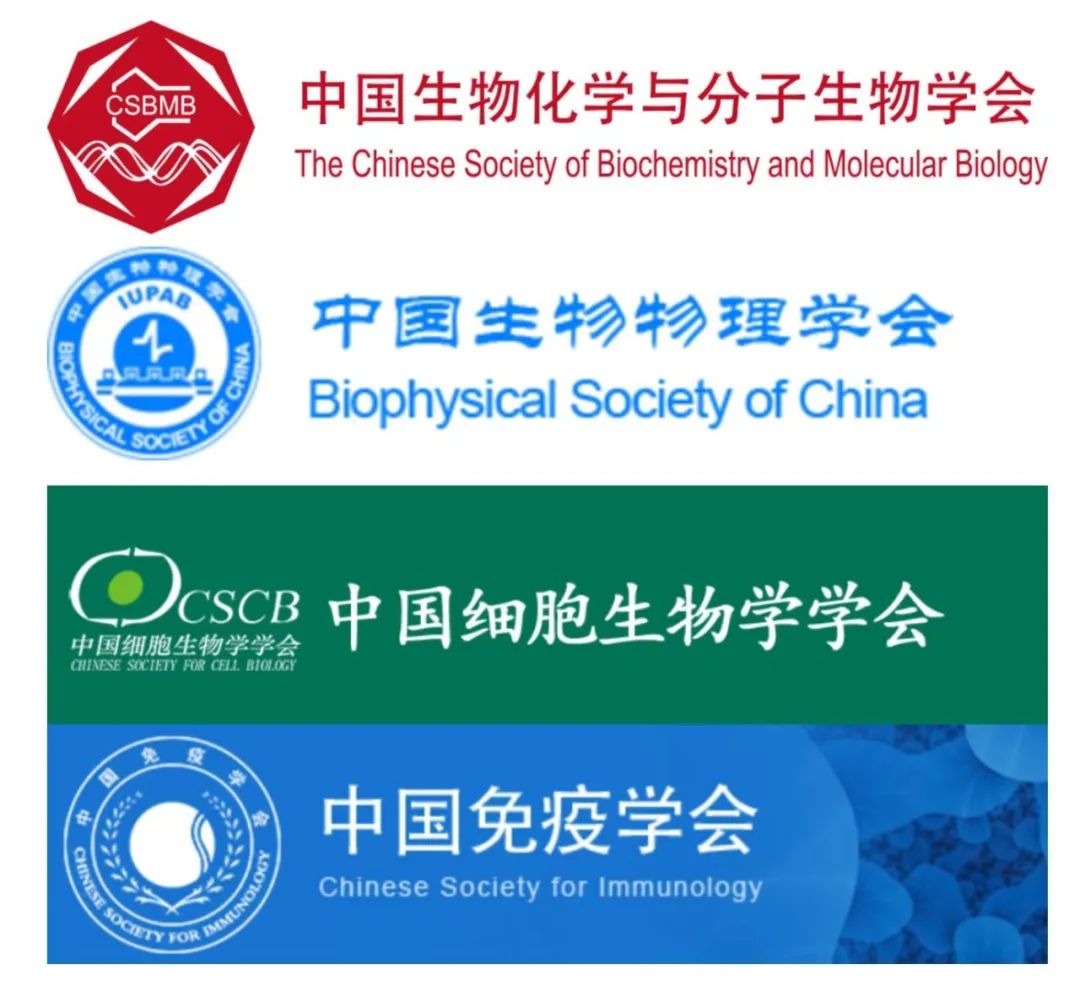
Strategic Partners(*Ranking is not in order)··




Reprint Notice
[Non-original article] The copyright of this article belongs to the author. Personal forwarding and sharing are welcome, but reprinting without the author’s permission is prohibited. The author retains all legal rights, and violators will be prosecuted.
